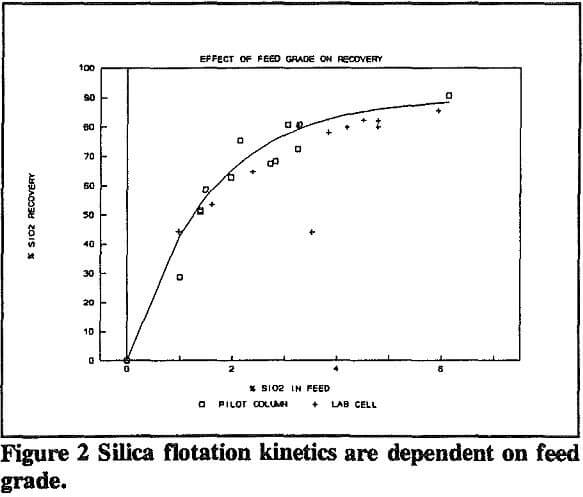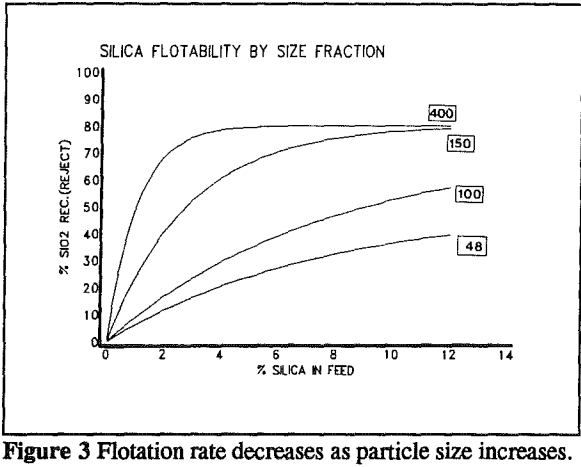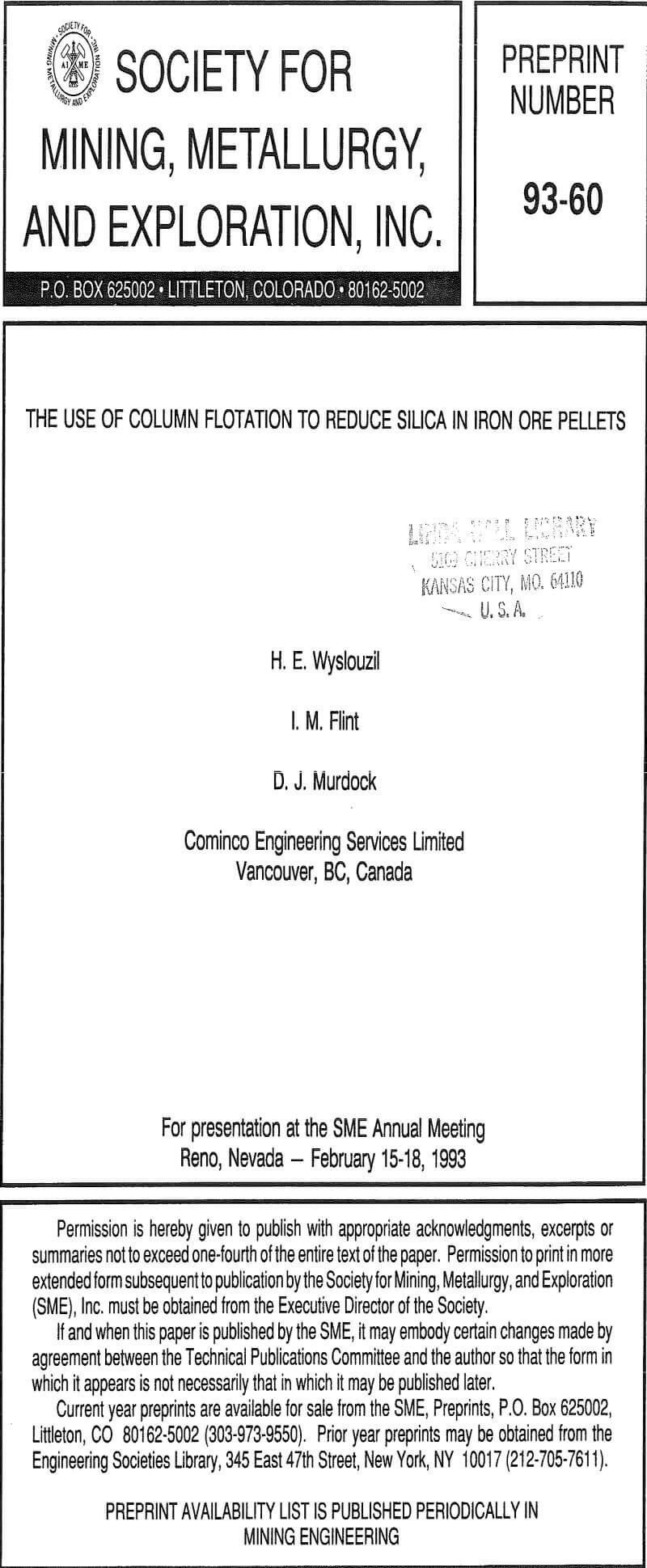The requirement for higher quality pellets demands that the silica content be lowered to levels ranging from 0.25% – 2.0% SiO2. Reverse flotation (silica is floated away from the iron concentrate) has proven to be an economical and effective method for reducing the concentrate silica content to very low levels. Laboratory and commercial test-work has demonstrated some significant metallurgical and economic advantages when column flotation cells are used for this application.
Column flotation has become widely accepted throughout the minerals industry. It is no longer considered to be new or risky technology and many new concentrators have incorporated column cells into the flowsheet.
The froth washing system on flotation columns serves two purposes. The first is to provide water for froth stabilization and the second is to displace the process water which normally discharges with the froth.

Many plants require the flexibility to produce more than one product grade (eg. blast furnace and direct reduction) using the same equipment. Usually when the higher silica blast furnace products are produced, the grinding requirements for liberation decrease and therefore the plants can operate at increased throughputs. The higher feed rate will affect the feed size distribution and must be taken into account in the circuit design.
In this Brazilian flotation plant, the original circuit consisted of four parallel mechanical flotation lines containing a rougher, cleaner, and two scavenging stages.
A number of circuit alternatives were considered:
- Installation of an additional line of conventional cells
- Increasing flotation capacity by installing a line of column cells
- Adding column cells to existing flotation lines to act as recleaners
Pilot plant results revealed that the third option provided the best combination of plant throughput and iron recovery. The flowsheet for the modified circuit is shown in Figure 1.
One column has been added as a recleaner to each processing line to preserve circuit flexibility. The recleaner column feed grade ranges between 1 % and 6% silica, therefore, one column stage is sufficient to produce either blast-furnace or direct-reduction concentrate.

A scavenger column has been added to the flowsheet to maximize fine iron recovery particularly during the periods where direct reducing grade is being produced. The size of the scavenger column was minimized by incorporating a screening stage between the recleaner and the scavenger to remove coarse silica.

The flotation rate constant is also affected by particle size. Many iron ore concentrators use the quantity of +100 mesh (.15mm) material in the flotation feed as a measure of the performance of the grinding circuit. 100 mesh particles are well within normal flotation range and present no particular problems. Particles larger than 48 mesh (0.3mm) however become increasingly difficult to float and to retain in the froth phase.


